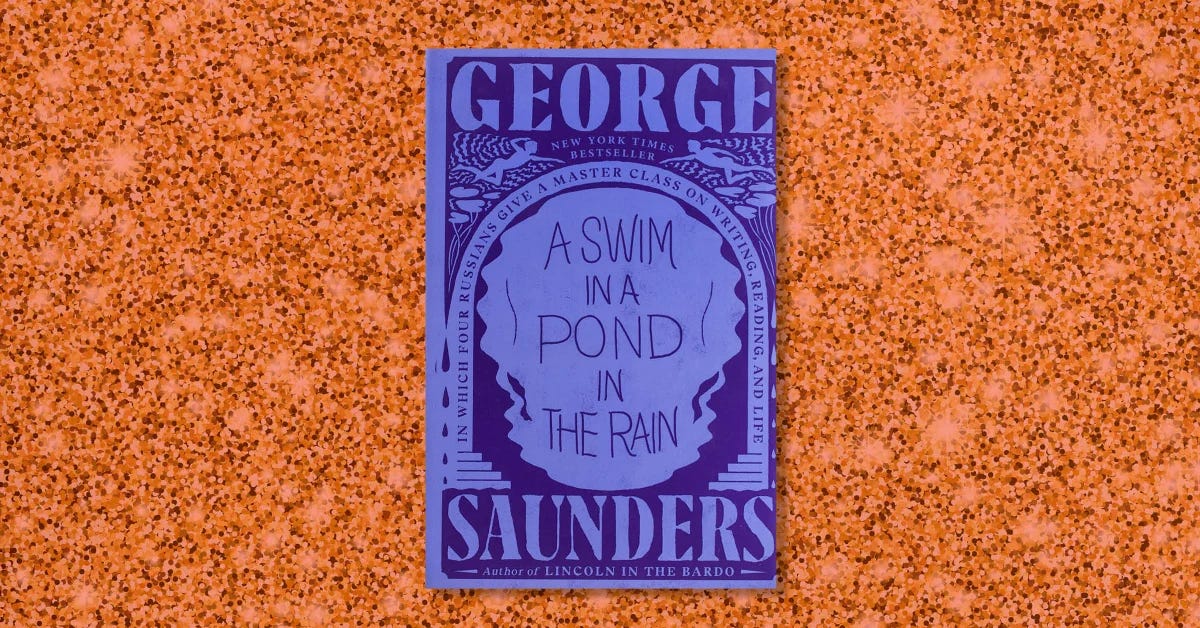[The Biz] George Saunders' Category Potential
His career progression for fame & fortune—and where (I think) he should go from here.
In the movie, “The Sixth Sense,” the main character (Cole) has a famous line where he says, “I see dead people.”
When this movie came out in 1999, I was 9 years old. And although my parents didn’t allow me to see the movie, other kids at school (who had seen the movie) would stop me in the hallway and ask, jokingly, seriously, “See any dead people today, Cole?”
I digress.
When I was writing Category Pirates with Christopher Lochhead and Eddie Yoon, Christopher used to make the joke that once you understand Category Design, you “see what others don’t”—like seeing dead people. Because the vast majority of the time, even if you can see the category opportunity clear as day, the person you’re trying to help oftentimes looks around and says, “Huh? Are you crazy? I don’t see anything here.”
To be clear: I don’t see dead people.
But I certainly see category potential.
George Saunders' Category Potential
If a writer were to ask for my favorite book recommendation right now, I would tell them: “You should stop everything you’re doing and buy a copy of A Swim In A Pond In The Rain by George Saunders.
It’s a graduate-level Russian literature class for $14.67.
It’s a compilation of world-class short stories.
It’s a history lesson, a stream-of-consciousness non-fiction performance, and a dynamic close-reading exercise that effortlessly straddles creative writing & “How To” education—which is exceedingly rare, and more difficult than people might realize. There is an invisible (electric) fence between these two sub-genres under the broad umbrella of non-fiction, and the closest most writers on one side get to the other is Wilson from Boy Meets World peering over the fence, eyeballs and hat only.
Said in 3rd grade terms: most writers who educate aren’t very poetic or creative. And most writers who are poetic or creative don’t bother taking the time to explain “How To” do it.
As a writer who does have a foot in both these worlds (I am a “teacher” in our programs Ship 30 for 30 & Premium Ghostwriting Academy), but I am also a “writer” and author of nearly a dozen books), I very much resonate with George Saunders’ style. Admittedly, it’s only recently I’ve gone down his rabbit hole of work—but it hasn’t taken me very long to spot where his unfair advantages lie.
I know category potential when I see it.
A Swim In A Pond In The Rain
Something we talk about all the time in our flagship writing program, Ship 30 for 30, is the importance of volume.
You never know what’s going to resonate with readers—so stop thinking “you know best” (because you don’t).
Instead, publish lots of things. Create lots of data points.
Pay attention to which ones grab people’s attention. Notice which ones prompt people to ask questions and engage thoughtfully.
Double-down on your winners, cut your losers.
And over time, once your “winning” niche reveals itself, start planting more & more flags there. Assert your dominance. Make it clear you own this territory.
The above process is the most effective way to think about finding “success” in any creative endeavor—IF your goal for that creative endeavor is to also achieve some form of “business” outcome: money, fame, career trajectory, network, opportunity flywheel, etc. (And your favorite writers & creators do this intuitively. My goal is to make you conscious of what’s happening “underneath the hood.)
A brief history of George Saunders’ career as a writer (according to Wikipedia):
He’s 64 years old (today).
In 1981, he received a B.S. in geophysical engineering from Colorado School of Minesin Golden, Colorado.
In 1988, he was awarded an M.A. in creative writing from Syracuse University.
From 1989 to 1996, Saunders worked as a technical writer and geophysical engineer for Radian International, an environmental engineering firm in Rochester, New York.
Since 1997, Saunders has been on the faculty of Syracuse University, teaching creative writing in the school's MFA program while continuing to publish fiction and nonfiction.
And to date (amounting to a smorgasbord of literary awards), he has written an uncountable number of short stories, short story collections, novels & novellas, and essays for The New Yorker.
And one “How To” nonfiction book: A Swim In A Pond In The Rain.
That’s a lot of data points!
But here’s why I’m fixated on the last one:
Keep reading with a 7-day free trial
Subscribe to The Art & Business of Digital Writing to keep reading this post and get 7 days of free access to the full post archives.





